









e 96,115-acre Pitchfork Ranch in Meeteetse, Wyoming, established in 1878, is a historic, fully operational cattle ranch with rich Western heritage, conservation e orts, and recreational appeal.



Set beneath the dramatic skyline of Wyoming’s Absaroka Mountains, Pitchfork Ranch is one of the American West’s most historic and storied landholdings. Encompassing 96,115 acres of deeded, leased, and permitted lands near Meeteetse, Wyoming, this iconic working ranch has shaped the course of Western ranching, wildlife conservation, and cultural imagination for nearly 150 years.

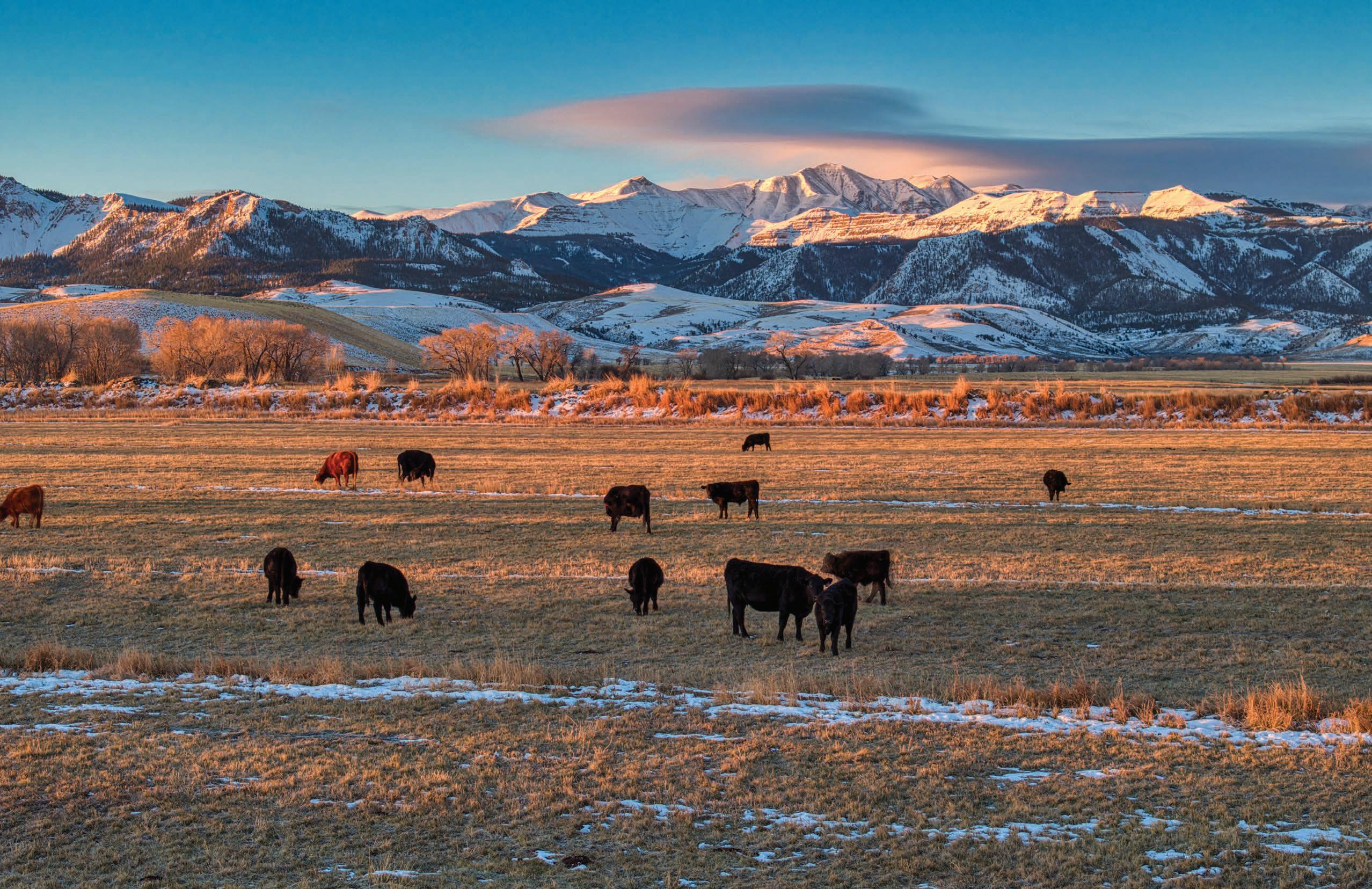
The Pitchfork’s legacy begins in 1878 with Otto Franc von Lichtenstein, a Prussian nobleman who sought not only land, but knowledge. When selecting a location for his cattle operation, Otto asked local Native Americans where the snow fell lightest in winter. They guided him to this sheltered basin, where prevailing winds kept the grasslands open even in cold months—providing one of the most reliable and affordable wintering grounds in the region. This choice laid the foundation for a ranching empire that, under Otto’s leadership, stretched cattle drives from Meeteetse to the Bighorn Mountains. The nearby town of Otto, Wyoming still bears his name.
After Otto’s death, the ranch was purchased by the Phelps family, who stewarded it through the early 20th century and grew its reputation for scale and quality. It was through this lineage that Charles Belden, a young man from California with a keen eye for photography, came to the Pitchfork—not by blood, but by marriage. He wed Frances Phelps, daughter of Eugene Phelps, and soon immersed himself in the daily life of the ranch.
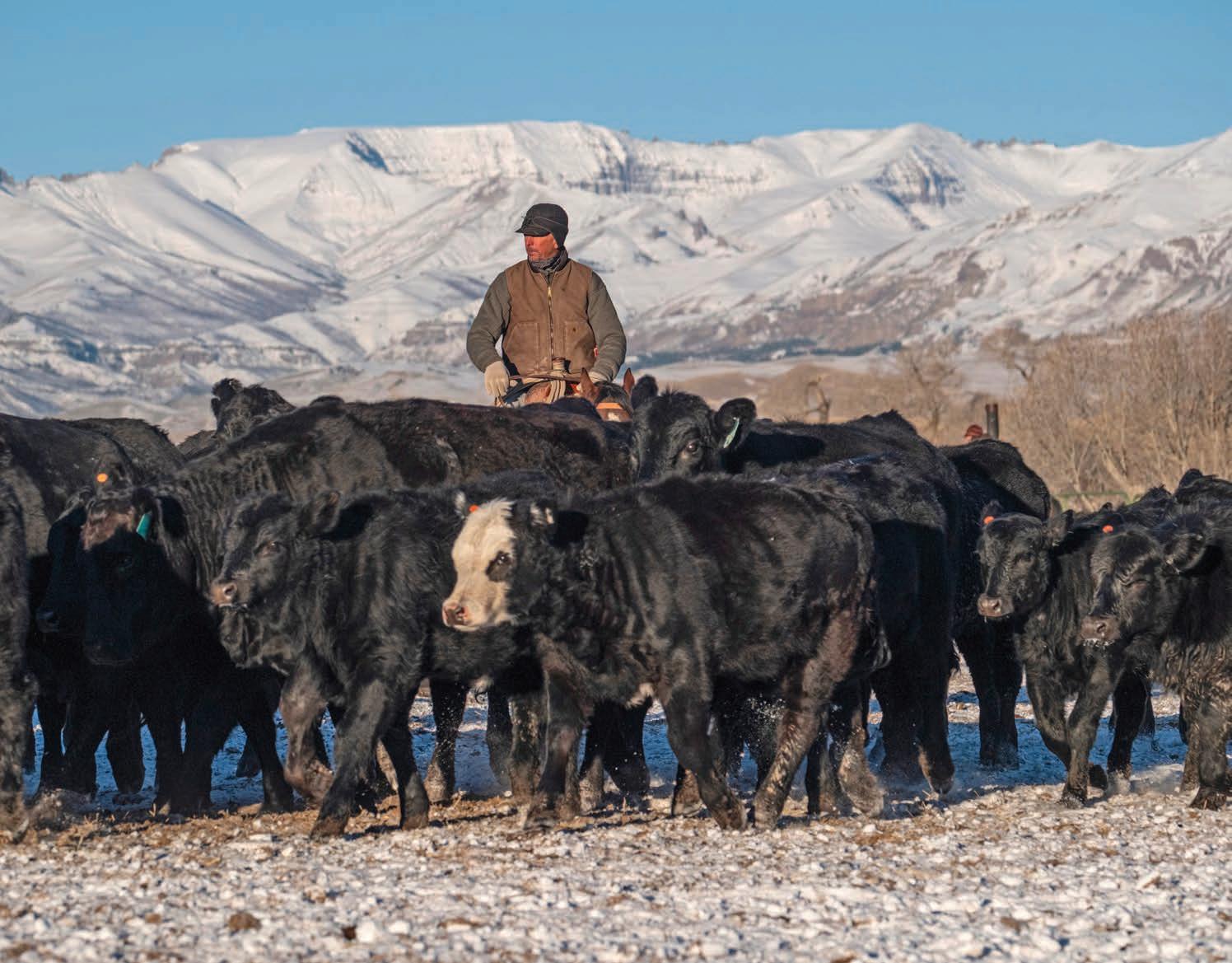


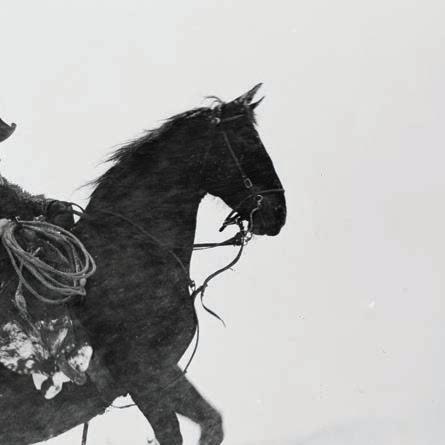


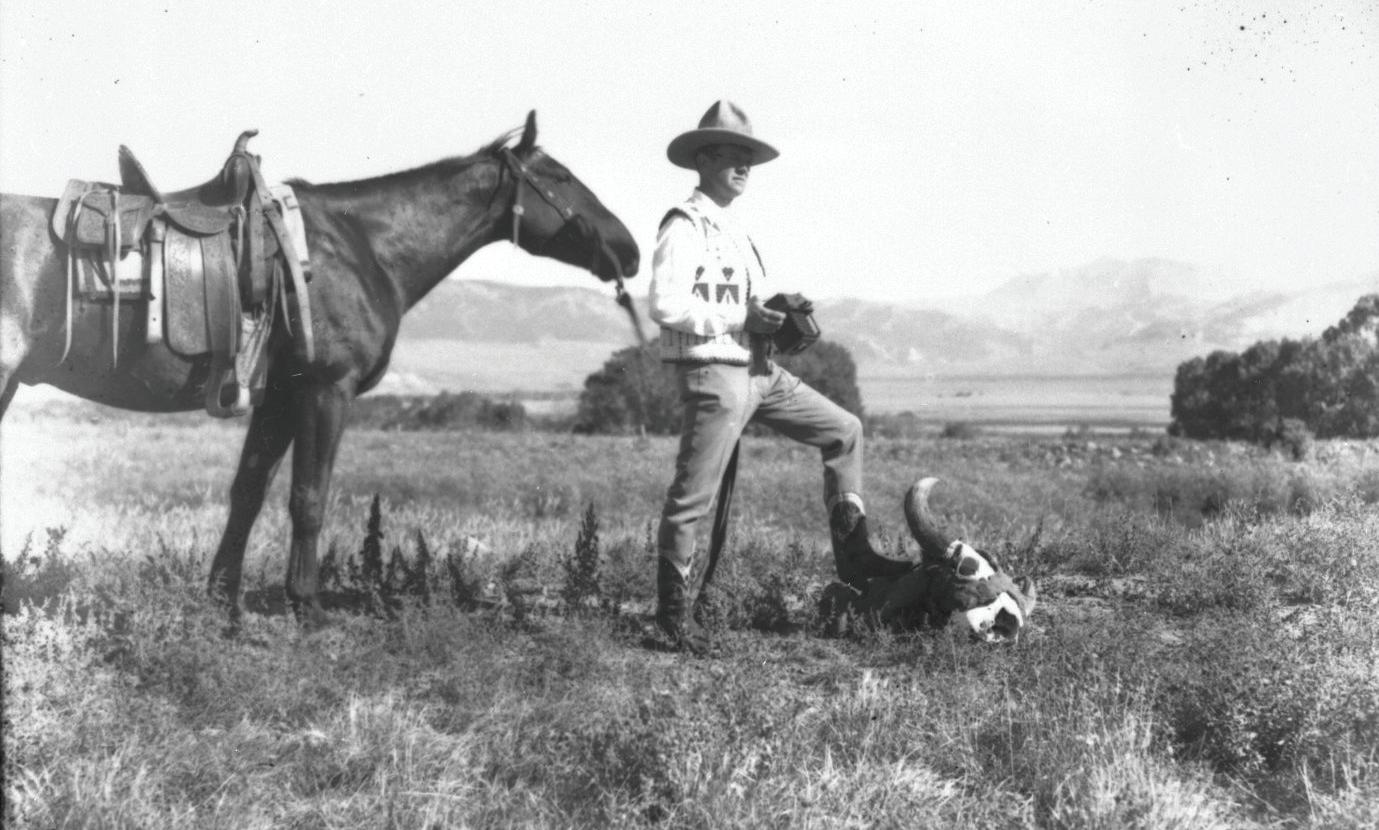
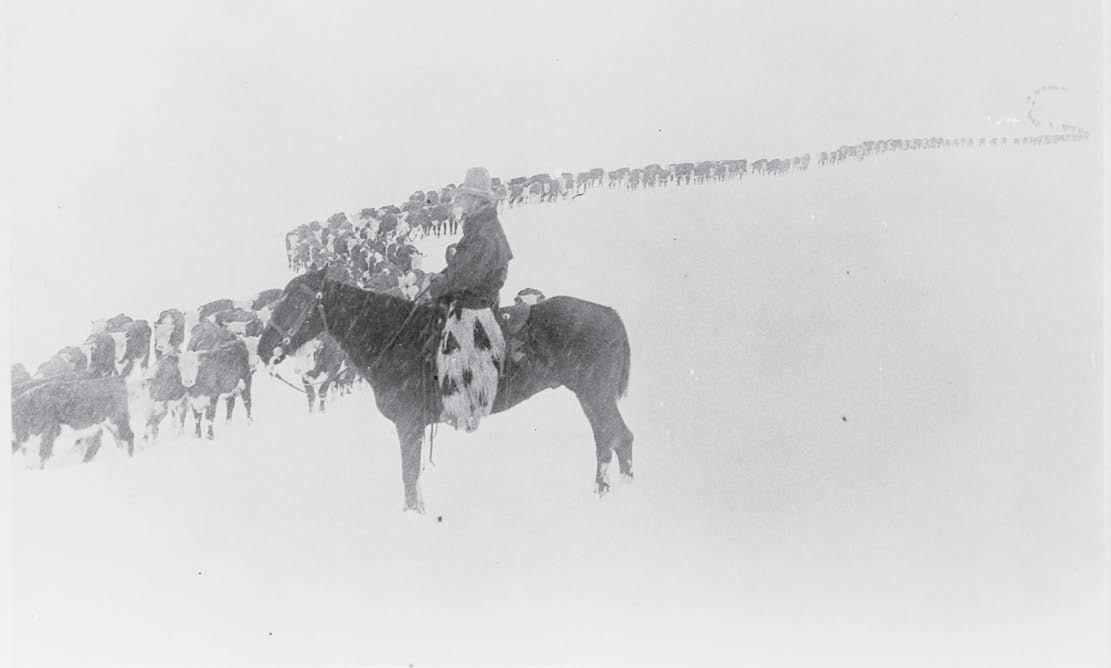






Charles Belden would become not only a resident of the Pitchfork, but its most important cultural ambassador. A graduate of MIT with a fascination for mechanics and imagery, Belden turned his lens on the raw, unfiltered realities of ranch life—cattle drives, snowbound winters, haying crews, horses in motion, and the stoic figures of cowboys at work. His photographs were not posed or imagined; they were lived. Belden became a working part of the Pitchfork’s daily rhythm, capturing its beauty, its hardship, and its authenticity from within.
His images found a national audience in Life, National Geographic, and newspapers across the country. Through his artistry, the Pitchfork became more than a remote Wyoming cattle operation—it became a symbol of the American West itself, shaping the public’s imagination of what cowboy life looked and felt like. His work helped elevate the ranch into the cultural consciousness, solidifying its legacy not only as an agricultural powerhouse but as a touchstone of Western identity.


Belden laid the groundwork for what would become another powerful visual era in the ranch’s story. In the early 1980s, the Pitchfork was chosen as the location for the Marlboro Man advertising campaign, a defining piece of American brand mythology. Shot on location in 1981 and again in 1983, the campaign selected the Pitchfork precisely because of its authentic cowboy lifestyle, sweeping vistas, and rugged terrain.
The photographs—featuring real cowboys, the weathered fences of the headquarters, and the stark silhouette of the Stone House against the sky—embodied the Marlboro ideal of untamed freedom. Some of these campaign images are now housed at the Meeteetse Museums, standing alongside Belden’s work as a continued testament to the ranch’s visual and cultural power.
Those same scenes remain today. Walk the pastures or ride beneath the Absarokas, and you’re not on a film set—you’re in the place where the story began.






Today, the Pitchfork remains a fully operational cattle enterprise, supporting a year-round herd of approximately 1,300 mother cows. Its layout and microclimate are not merely historic— they remain critically functional. The ranch’s natural ridgelines and high-desert valleys allow wind to strip snow from key grazing areas, minimizing winter feed requirements and enabling cattle to graze through much of the cold season. Irrigated hay meadows—over 1,100 acres in total—support hay production, while the Greybull River and spring systems provide abundant water throughout the year.
The operational core of the Pitchfork includes eight residences, multiple barns, and working pens, along with a collection of historic structures dating back to the early 1900s. At the center stands the Stone House, a grand residence built in 1914 from hand-cut local sandstone. With its commanding views of the Greybull Basin and formal dining room used to entertain dignitaries and guests, the Stone House has long served as the symbolic heart
of the ranch. Its broad porches and distinctive profile remain one of the most photographed landmarks in the region.
Flanking the he adquarters are two original barns, each constructed with hand-hewn timbers and traditional framing techniques. These barns, once used for teams of working horses and winter hay storage, still stand as testaments to the ranch’s enduring craftsmanship and utility. Together, these historic structures reflect a continuity of purpose—where heritage architecture meets present-day function.
The ranch also benefits from modern infrastructure, including a natural gas supply and upgraded irrigation pivots, allowing for efficient and cost-effective operations year-round.
Summer grazing continues through traditional routes to high-mountain pastures on Forest Service and State leases surrounding Carter Mountain, while rotational systems allow for rest and rejuvenation of lower meadows.










The Pitchfork offers world-class big game hunting, fishing, horseback riding, and backcountry exploration across a landscape that feels largely unchanged by time. Roughly 5,000 elk winter in the region, many congregating along the river corridor that runs through the ranch. Trophy-class bulls are a frequent sight, and hunting tags in this area are tightly controlled, enhancing both wildlife health and recreational value. Mule deer, moose, antelope, black bears, mountain lions, and wild turkeys are also abundant. The ranch’s diversity of terrain—from rolling sagebrush hills to timbered ridges—offers an unmatched hunting experience, one that has attracted out-of-state hunters for decades, many of whom return each year and form lasting bonds with the land and community.
For anglers, the Greybull River is a treasure. Ranked among the top cutthroat trout fisheries in the U.S., its fast, cold waters yield thrilling dry-fly fishing in late spring and fall. The ranch also contains spring-fed creeks and reservoirs teeming with brook, rainbow, and tiger trout—some of them remote and completely private. Riding and hiking through the ranch’s named tributaries— Jack Creek, Rose Creek, Frank’s Fork—and visiting seasonal cow camps like Haymaker and Wagon Box offer a backcountry experience as rich in solitude as it is in scenery.




From its earliest years, the Pitchfork Ranch has been on the leading edge of wildlife conservation. Charles Belden worked closely with Wyoming Game & Fish to preserve Wyoming’s pronghorn antelope herds, even shipping live animals to zoos in New York and Europe. He famously pioneered aerial fish stocking after watching an eagle drop a live fish mid-flight, developing an idea that helped repopulate high-mountain lakes. In more recent years, the ranch played a pivotal role in the recovery of the endangered blackfooted ferret—hosting the last viable population before disease forced their removal and later reintroduction.
The conservation ethic continues today. Landowners in the basin, including the Pitchfork, voluntarily closed over a million acres to hunting to help mule deer populations recover—well before any regulatory mandates were introduced. The ranch participates in Wyoming’s “Access Yes!” program and maintains critical habitat for elk, moose, and other migrating wildlife. The property is known for its wildlife visibility: it’s not uncommon to see a grizzly bear from the main road or spot elk herds roaming in full view of the ranch headquarters.




Pitchfork Ranch is a visual marvel. Its southern edge rises into the towering Absaroka Range, including views of Frank’s Peak—the highest summit in Park County at 13,153 feet. The ranch’s elevation and orientation give it an open, expansive feeling, quite different from narrower drainages like the nearby Wood River Valley. This landscape provides privacy without isolation, a sense of wilderness without giving up access.
Just 45 minutes from Cody Regional Airport, the ranch is accessible by a combination of paved and gravel roads.
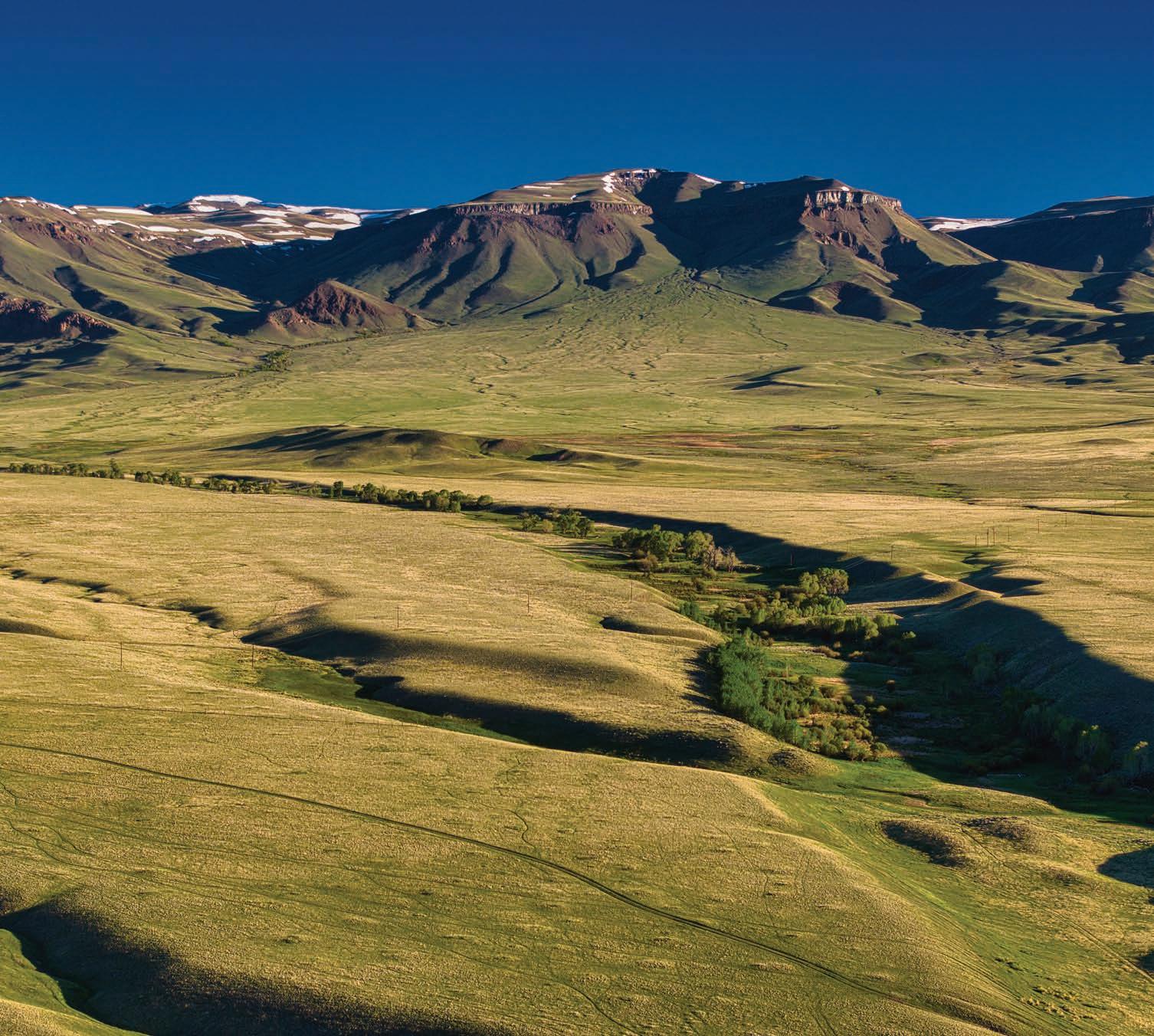

Pitchfork Ranch has been passed through five generations, with a sixth now involved—an almost unheard-of continuity in Western landholding. With that continuity comes institutional knowledge, cultural memory, and a quiet but profound understanding of what it means to be a steward of this land. Local neighbors share in this ethic. Community members hope the next owner will embrace the Pitchfork not just as an asset, but as an inheritance of responsibility, opportunity, and place.
For the right buyer, the Pitchfork is more than a working ranch or a recreational haven. It is an original— one of the last large-scale landholdings where the full spectrum of the American West is alive and functioning. Its grass still feeds cattle. Its river still runs wild with trout. Its ridgelines still carry the call of elk. And its legacy is ready to be carried forward.
Offered for $52.8 million, the Pitchfork Ranch is an extraordinary opportunity to own—and steward—a true piece of Western history.

Located 17 miles west of Meeteetse, WY; 47 miles south of Cody, WY; 153 miles southwest of Billings, MT; 475 miles northwest of Denver, CO
96,115 total acres
• 13,886 deeded acres
• 31,600 state lease acres
• 5,645 BLM acres
• 44,984 Forest Service acres
• Strong territorial and stored water rights
• 7 Zimmatic pivots (installed 2022), irrigating ~660 acres
• 448 acres under flood irrigation; 1,100+ acres in hay production
• 2022 hay yield: 2 tons/acre; 2023: 3.4 tons/acre in one cutting
• Improvements underway with Wyoming Game & Fish for irrigation/fish passage
CARRYING CAPACITY AND RANGELAND
• Owner-rated for 1,300 cows
• Two Forest Service allotments:
– 925 cow/calf pairs (July 10 – August 28)
– 127 cow/calf pairs (July 1 – September 30)
• Pasture and protein supplemented with cake
• Cattle wintered on irrigated meadows prior to fall shipping
8 homes at HQ including:
• River House (3,500 sf, 4 bed/3 bath, indoor pool)
• Manager’s House (2,600 sf log home,
2 bed/2 bath + loft)
• Owner’s House (5,400 sf stone home, 8 bed/5 bath)
• Carriage House (2 bed/2.5 bath + 3-car garage)
• Converted Post Office (1 bed/1 bath)
• 5 manufactured homes on permanent foundations (3 bed each)
AND WORKING FACILITIES
• 1930s log barns, still in use
• Heated shop with grease pit, office, and 2 conference rooms
• Horse barn with heated tack room, tie racks, 45x90’ riding area
• 50’ round pen and 150x250’ roping arena
• Equipment sheds and overhead cake bin
• Working pens (headquarters and 2 miles east), log cabins, powder river panels
EASEMENTS
• Most deeded acres in easement with The Nature Conservancy
• Allows ranching; restricts development/subdivision
• 5-acre building envelopes; livestock shelters allowed
• CRP-G program with Farm Service Agency pays $50,000 annually through 2036
• Private roads with public easement to USFS
• Road maintenance agreements in place
• Limited oil/timber activity; no other commercial use
• Utility easements with power and gas companies Wildlife & Conservation History
• Black-footed ferret rediscovery site (1981)
• Reintroduction effort by USFWS and WY Game & Fish
• Successful population growth since 2016
Annual precipitation: 14 inches
Average temperatures (High/Low):
– Jan: 35°/7°
– Mar: 44°/15°
– May: 60°/31°
– July: 78°/44°
– Sep: 68°/34°
– Nov: 42°/14°









